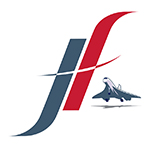How to land a plane.. Our favourite FAQs.. #5 What controls what, on final approach?
We share some valuable insight to a perennial, yet vital question: One which is often explained, poorly.
FAQ #5 ‘I was taught that airspeed is controlled with the elevators and rate of descent is controlled with the throttle. Is this not correct?’
The concept of ‘elevators controlling path angle and power/thrust controlling airspeed’ for normal, powered approaches is not new. The use of the primary effects of the flight controls is essential in achieving a stable approach path on visual and instrument approaches in ANY airplane and has been widely and wisely utilised for decades, by civil and military aviators.
Using the secondary effects of the flight controls, i.e., ‘elevators controlling airspeed’, is certainly valid when gliding, or on a forced landing caused by partial or total loss of engine power or thrust; and is clearly unavoidable when climbing. These are all cases when power/thrust is at a fixed setting, necessarily.
The dubious concept of ‘power/thrust facilitating rate of descent on a normal, powered approach is very clumsy and unintuitive, especially for student pilots, in light airplanes and is totally ineffective on larger/faster airplanes.
The rate of descent on final approach is a function of just two variable factors: flight path angle and groundspeed. Certainly, the variation of power/thrust can facilitate a change in path angle, at a given indicated airspeed, but it does not directly control rate of descent. In any case, it is a very second-hand way of flying an approach and offers no stability. A roller coaster flight path is the inevitable result, leading to unstable approaches. This is one of several major reasons for inconsistent and poor quality landings.
Another critical issue is to consider the two common errors that student pilots (and licensed ones, also) who have been taught this inaccurate method, make frequently:
1. High and fast, on final approach; and/or
2. Low and slow. In each case, the initial response, for a pilot trained to think that the elevators control airspeed will COMPOUND both problems.
The pilot who is HIGH will pitch UP, making things worse and the pilot who is LOW will pitch DOWN – the LAST things the pilot should be doing, to resolve each error! A third major issue is that the roller coaster flight path ensures that the threshold crossing height of the aircraft will be totally inconsistent, making landing judgment and touchdown points quite haphazard.
As if all that is not enough of a problem, the situation worsens at a most critical phase: the flare point. A pilot, pitching the aeroplane with the elevators to control AIRSPEED, now needs to transfer the purpose of the elevators to pitch the aircraft to control the FLIGHT PATH ANGLE. What a ridiculous moment to completely redefine the flight path control philosophy! It defies all logic.
A further point (apart from greatly improved passenger comfort) is that by flying a stable approach with a more-or-less constant body angle, the lowest angle we can see over the nose of the airplane is also more-or-less constant. This fact is crucial in facilitating the Jacobson Flare’s unique visual fix for the initiation of the flare itself – inspired by the 1943 RAF 617 Sqn ‘Dambusters’ – and is responsible for the automatic self-correction of the pre-calculated flare fix for variations in landing flap settings, approach path angles, runway slopes and discounting the height illusions caused by varying runway widths.
“But this is just contrary to the way VFR training is frequently taught. I went through several instrument instructors, and never found one who could adequately explain why we (CFIs) teach aircraft control differently to VFR and IFR students. Your explanation was right on, and satisfied my thirst for that understanding with an easily to implement and repeatable solution.” (Mark Santacroce, USA)
Mark was dead right – that aspect has long bemused me, also. Why teach the correct method when IFR, and the flawed ‘speed descent’ method when VFR? After all, the airplane doesn’t know the difference between IFR and VFR! But it does know the difference between a powered and a glide approach And that is the arbiter.
However, this aspect is only a part of the ‘How to aim?‘ second step in using the Jacobson Flare. All five steps must be applied for this comprehensive technique to be applied consistently well.
The full discussion on this and many other related topics may be found in The Jacobson Flare App for iOS, available on the App Store .
Wishing you many safe landings
Captain David M Jacobson FRAeS MAP
Would you care to experience that unsurpassed sense of accomplishment, derived from executing consistently beautiful landings, more often?
For starters, Download the FREE Jacobson Flare LITE, our no fuss/no frills introduction. Here we demonstrate, step by step, the application of the Jacobson Flare on a typical grass airstrip at Porepunkah, YPOK.
We invite you to browse the consistently positive comments on our Testimonials page. Many pilots, of all levels of experience, have downloaded our Apps. Read about their own experiences with the Jacobson Flare technique and the App.
Then download the COMPLETE Jacobson Flare app – for iOS. You’re already possibly paying $300+/hour to hire an aeroplane: You’ll recover the cost of the app, in just ONE LESS-NEEDED CIRCUIT. Moreover, you’ll have an invaluable reference tool, throughout your entire life in aviation.
Download the COMPLETE Jacobson Flare App for iOS devices now.
We invite you, also, to review our new, FREE companion app,
offering a convenient way of staying abreast of our latest blogs.
Download the Jacobson Flare NEWS App for iOS devices now.


